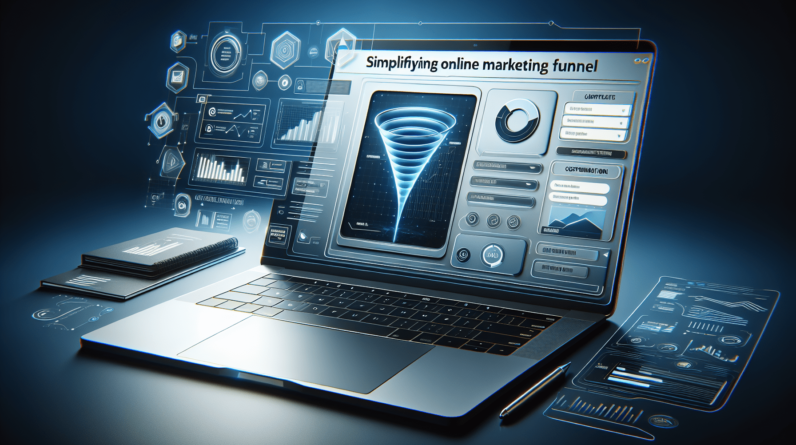
Are you looking to enhance your advertising strategies and maximize your reach? Look no further than email marketing! This article will provide you with valuable insights and tips on how to effectively utilize email marketing as a powerful tool in your advertising campaigns. From crafting compelling subject lines to nurturing customer relationships, you will discover the secrets to driving engagement and boosting your conversions through this highly cost-effective and targeted marketing approach. Get ready to make a splash in the world of email marketing!
Understanding Email Marketing
What is email marketing?
Email marketing refers to the practice of sending commercial messages via email with the aim of promoting a product, service, or brand to a targeted audience. It involves utilizing email as a tool for building relationships with potential customers, as well as nurturing existing ones. Email marketing can encompass a wide range of strategies, such as sending newsletters, promotional offers, product updates, and more.
Benefits of using email marketing in advertising
Email marketing offers several advantages that make it a popular choice among advertisers. Firstly, it provides a direct and personalized way to reach your audience. With email, you can tailor your message based on individual preferences, interests, or previous interactions, increasing the likelihood of engagement and conversions.
Furthermore, compared to traditional advertising methods, email marketing is cost-effective and provides a high return on investment (ROI). With minimal expenses, you can reach a large number of recipients, making it a cost-efficient marketing strategy for businesses of all sizes.
Another significant benefit of email marketing is its ability to drive customer engagement and retention. By regularly connecting with your audience through valuable and relevant content, you can build trust, strengthen relationships, and encourage customer loyalty. Additionally, email marketing allows you to track and measure the performance of your campaigns, providing valuable insights for refining your marketing strategies.
Types of email marketing campaigns
There are various types of email marketing campaigns that businesses can implement to achieve their advertising goals. Some common types include:
-
Welcome emails: Automatically sent to new subscribers, these emails serve to introduce your brand and provide important information about your products or services.
-
Newsletters: Regularly scheduled emails that deliver updates, news, and valuable content to subscribers. Newsletters are a great way to keep your audience engaged and informed.
-
Promotional emails: These campaigns focus on promoting specific products, services, or discounts to encourage conversions and sales. They can include limited-time offers, exclusive discounts, or special promotions.
-
Abandoned cart emails: Sent to customers who have added items to their online shopping cart but failed to complete the purchase, these emails serve as gentle reminders and can include incentives to encourage the completion of the transaction.
-
Re-engagement emails: Used to reconnect with inactive subscribers, re-engagement emails aim to reignite interest by offering personalized incentives or reminding users of the value they can gain from your brand.
-
Transactional emails: Triggered by specific customer actions, such as making a purchase, password reset, or order confirmation, these emails provide essential information while also offering opportunities for upselling or cross-selling.
By understanding these different types of email marketing campaigns, businesses can create targeted and engaging content that resonates with their audience, driving desired actions and increasing conversions.
Building an Effective Email List
Creating an opt-in form
One of the first steps in building an effective email list is creating an enticing opt-in form. This form should be prominently displayed on your website and capture visitors’ attention. The form should clearly state the benefits of subscribing to your email list and make it easy for users to enter their information.
When designing the opt-in form, keep it simple and avoid asking for too much information upfront. Typically, asking for a name and email address is sufficient. Additionally, make sure the form is mobile-friendly, as an increasing number of users access websites via their smartphones or tablets.
Offering incentives for subscribing
To encourage visitors to subscribe to your email list, it’s essential to provide valuable incentives. This could include exclusive discounts, free resources or eBooks, access to members-only content, or early access to new products or features. By offering something of value in exchange for their email address, you’re more likely to attract potential subscribers.
Segmenting your email list
Segmentation is a crucial aspect of building an effective email list. By dividing your subscribers into smaller, more targeted groups based on specific demographics, interests, purchase history, or engagement levels, you can deliver more relevant content and offers. Segmenting your email list allows you to send personalized emails that resonate with each segment, increasing the chances of engagement and conversion.
Segmentation can be based on a variety of factors, such as geographic location, customer preferences, purchase behavior, or engagement with past emails. An effective way to gather this information is through an email preference center where subscribers can choose the types of content they are interested in receiving.
By segmenting your email list and sending tailored content to each group, you can enhance the overall effectiveness of your email marketing campaigns and better meet the needs and preferences of your subscribers.

Crafting Compelling Email Content
Understanding your target audience
Before creating email content, it’s crucial to have a deep understanding of your target audience. Research their demographics, interests, pain points, and preferences. This information will guide you in crafting content that resonates with your audience and drives engagement.
Conduct surveys, analyze customer data, and engage with your audience through social media platforms to gain valuable insights into their interests, challenges, and aspirations. By building a thorough profile of your target audience, you can tailor your email content to their needs and preferences, increasing the chances of conversion and customer satisfaction.
Writing a captivating subject line
The subject line is the first thing recipients see when they receive your email, making it a crucial element in increasing open rates. To craft a captivating subject line, it should be concise, compelling, and relevant to the content inside the email. Consider using action words, personalization, and creating a sense of urgency or exclusivity to grab the recipient’s attention.
A/B testing different subject lines can also help identify what resonates best with your audience. By testing variations and analyzing performance metrics, you can optimize your subject lines for maximum impact and open rates.
Personalizing email content
Personalization is key to increasing engagement and conversions in your email marketing campaigns. Addressing subscribers by their first name, mentioning their past interactions or purchases, and offering tailored recommendations or offers based on their preferences can create a sense of individualized attention and relevance.
Additionally, use segmentation to deliver personalized content based on subscribers’ interests or demographics. This can include sending targeted product recommendations, relevant blog posts, or exclusive offers based on the recipient’s preferences or past interactions with your brand.
Using persuasive copywriting techniques
Effective email marketing involves using persuasive copywriting techniques to compel recipients to take action. Write clear, concise, and compelling content that highlights the value of your products or services, addresses the reader’s pain points, and offers a solution. Utilize storytelling, empathy, and social proof to engage readers and create a strong emotional connection.
Furthermore, incorporate clear calls to action (CTAs) in your emails, guiding recipients towards the desired action, whether it’s making a purchase, signing up for an event, or downloading a resource. Make your CTAs prominent, visually appealing, and compelling to encourage click-throughs and conversions.
Incorporating visual elements
To make your emails visually appealing and engaging, incorporate relevant visual elements. This could include product images, infographics, videos, or GIFs. Visual content not only grabs attention but also helps convey information more effectively and makes emails more memorable.
However, it’s important not to overload your emails with visuals, as this can lead to slower load times and potential deliverability issues. Strike a balance between text and visuals, making sure that the visual elements enhance the overall message and drive engagement.
Designing Eye-catching Email Templates
Choosing a responsive email template
When designing email templates, it’s essential to choose a responsive template that adapts to different devices and screen sizes. With the increasing use of smartphones and tablets to check emails, responsive design ensures that your emails are easily accessible and visually appealing across various devices.
Responsive email templates automatically adjust the layout, font sizes, and image sizes, providing a seamless user experience regardless of the device being used. This ensures that your email content is easily readable and engaging, leading to increased open rates and click-through rates.
Aligning with your branding
Consistency is key when it comes to email marketing. Your email templates should align with your company’s branding, including colors, fonts, logos, and overall design aesthetics. By using consistent branding elements, you create a cohesive and recognizable visual identity, strengthening the connection between your brand and the recipients.
Additionally, consistent branding builds trust and familiarity with your audience. When subscribers open your emails, they should feel a sense of familiarity and association with your brand, enhancing engagement and reinforcing brand loyalty.
Using a consistent layout
In addition to aligning with your branding, maintaining a consistent layout in your email templates is important. A consistent layout makes it easier for recipients to quickly scan and digest the content, leading to better comprehension and engagement.
To maintain a consistent layout, consider the placement of elements such as headers, footers, navigation menus, and CTAs. Consistency in the placement and formatting of these elements allows subscribers to easily navigate your emails and take the desired action.
Optimizing for mobile devices
Considering the increasing number of users accessing emails on mobile devices, optimizing your email templates for mobile is crucial. Mobile optimization involves ensuring that the layout, font sizes, and images are easily readable and visually appealing on smaller screens.
To optimize for mobile, keep your email design simple and minimize the use of large images or complex formatting that may not render well on mobile devices. Use larger font sizes, clear CTAs, and avoid excessive scrolling. Testing your email templates across various devices and email clients will ensure a seamless experience for all recipients.

Implementing Email Automation
Setting up triggered emails
Email automation allows you to set up triggered emails that are automatically sent based on specific customer actions or events. Triggered emails are highly targeted and timely, providing relevant content at the right moment and improving overall engagement.
Some common examples of triggered emails include welcome emails, abandoned cart reminders, order confirmations, and birthday or anniversary emails. By setting up triggers, you ensure that your subscribers receive the right message at the right time, enhancing their overall experience and increasing the likelihood of conversion.
Creating drip campaigns
Drip campaigns involve sending a series of automated emails over a predetermined period to nurture leads and guide them through the customer journey. These campaigns help build relationships and foster engagement by delivering valuable content and offers gradually.
Drip campaigns can be designed to educate, onboard, nurture, or re-engage subscribers, depending on their stage in the customer lifecycle. By strategically planning and automating these campaigns, you can provide a consistent and personalized experience, building trust and increasing the chances of conversion.
Implementing personalized email sequences
Personalized email sequences allow you to send a series of automated emails tailored to individual subscribers’ interests, behavior, or preferences. By leveraging data collected about each subscriber, you can create dynamic and relevant email sequences that deliver a more personalized experience.
For example, if a subscriber recently made a purchase, you can set up a sequence of follow-up emails offering related products, recommendations, or exclusive discounts. By tailoring the content of your email sequences based on individual behaviors or interactions, you can increase engagement and establish a strong connection with your subscribers.
Optimizing Email Deliverability
Maintaining a clean email list
Maintaining a clean email list is crucial for maximizing email deliverability. Regularly clean your email list by removing invalid email addresses, spam traps, and inactive subscribers. High bounce rates and spam complaints can negatively impact your sender reputation and lead to lower deliverability rates.
To maintain a clean list, regularly monitor your email engagement metrics, such as open rates, click-through rates, and unsubscribe rates. Remove inactive subscribers who haven’t engaged with your emails for an extended period, as they are less likely to be interested in your content or make future purchases.
Avoiding spam filters
To ensure that your emails reach your subscribers’ inboxes, it’s crucial to avoid triggering spam filters. Avoid using spam trigger words or phrases in your subject lines or email content. Take care to only send emails to subscribers who have explicitly opted in to receive them to avoid being marked as spam.
Additionally, use a reputable email service provider (ESP) that adheres to industry best practices and has a good sender reputation. ESPs with established relationships with email clients and spam filter providers are more likely to have better deliverability rates.
Implementing double opt-in
Implementing a double opt-in process adds an extra layer of security to your email list and ensures that subscribers genuinely want to receive your emails. Double opt-in requires users to confirm their subscription by responding to a confirmation email or clicking on a verification link.
With double opt-in, you can be confident that your subscribers have actively opted in and are more likely to engage with your emails. This not only improves deliverability rates but also protects your sender reputation by reducing chances of spam complaints.
Monitoring email performance metrics
Regularly monitoring email performance metrics is essential for optimizing your email marketing efforts. Key metrics to track include open rates, click-through rates, conversion rates, bounce rates, and unsubscribe rates. Analyzing these metrics allows you to gauge the effectiveness of your email campaigns and identify areas for improvement.
By understanding how your emails are performing, you can make data-driven decisions to refine your subject lines, content, or design. A/B testing different elements, such as subject lines, CTAs, or visuals, can help identify what resonates best with your audience and drives better engagement and conversion rates.

Testing and Analyzing Email Campaigns
A/B testing subject lines and email content
A/B testing, also known as split testing, is a valuable technique for optimizing email campaigns. By testing different variations of subject lines, email content, design elements, or CTAs, you can identify what resonates best with your audience and drives higher engagement.
When conducting A/B tests, ensure that you test only one element at a time to accurately measure its impact. Split your email list into two groups and send each group a different version of the email. Analyze the performance metrics to determine which variation resulted in the desired outcome, allowing you to refine and improve future campaigns.
Analyzing open rates and click-through rates
Open rates and click-through rates are two critical metrics to analyze when evaluating the effectiveness of your email campaigns. Open rates indicate how many recipients opened your email, while click-through rates measure the percentage of recipients who clicked on links within your email.
Low open rates may indicate that your subject lines are not compelling enough, while low click-through rates may suggest that your content or CTAs are not engaging or clear. By tracking and analyzing these metrics, you can identify areas for improvement and adjust your strategies accordingly.
Using email analytics tools
Email analytics tools provide valuable insights into the performance of your email campaigns. These tools track metrics such as open rates, click-through rates, conversion rates, and more, allowing you to analyze and visualize your data easily.
Popular email analytics tools include Mailchimp, Constant Contact, and Campaign Monitor, among others. By utilizing these tools, you can gain deeper insights into your email marketing performance, track the effectiveness of different campaigns, segment your audience further, and make data-driven decisions to optimize your future email marketing efforts.
Integrating Email Marketing with Other Advertising Channels
Creating cohesive marketing campaigns
Integrating email marketing with other advertising channels helps create cohesive marketing campaigns that deliver a consistent message across multiple touchpoints. By aligning your email marketing efforts with your social media, content marketing, or paid advertising strategies, you reinforce your brand message and enhance the overall effectiveness of your campaigns.
For example, when launching a new product or campaign, send an email to your subscribers announcing the news. Simultaneously, promote the same message on your social media channels and display targeted ads to reach a broader audience. By coordinating your efforts across different channels, you increase the chances of capturing your audience’s attention and driving desired actions.
Leveraging social media in email marketing
Social media platforms provide an excellent opportunity to grow your email list and promote your email campaigns. Include social media icons and share buttons in your emails, allowing recipients to easily share your content with their networks, expanding your reach.
Additionally, utilize social media advertising to target users who have similar characteristics or interests to your email subscribers. This allows you to reach a wider audience and encourage them to subscribe to your email list, further nurturing your relationship through email marketing.
Syncing email marketing with website content
Syncing your email marketing efforts with your website content helps create a seamless user experience and reinforces your brand messaging. When promoting specific content or offers through email campaigns, ensure that the corresponding landing pages on your website provide a consistent experience.
By maintaining consistency in messaging, design, and offers between your emails and website, you build trust and familiarity with your audience. This cohesive experience increases the chances of conversions and enhances the overall effectiveness of your marketing efforts.
Ensuring Compliance with Email Marketing Regulations
Understanding CAN-SPAM Act and GDPR
Compliance with email marketing regulations is essential to protect your brand reputation and maintain trust with your subscribers. The CAN-SPAM Act (Controlling the Assault of Non-Solicited Pornography and Marketing Act) applies to commercial emails sent in the United States, while the General Data Protection Regulation (GDPR) applies to the European Union.
Both regulations require businesses to obtain consent from subscribers, provide clear unsubscribe options and contact information, and adhere to certain rules when sending commercial emails. Familiarize yourself with the specific requirements of these regulations to ensure your email marketing practices are compliant.
Including unsubscribe links and clear opt-out options
Including unsubscribe links and clear opt-out options in your emails is a legal requirement and best practice. Ensure that recipients can easily find and use these features to opt out of receiving future emails. By providing clear and simple opt-out processes, you demonstrate respect for your subscribers’ preferences and comply with email marketing regulations.
Respecting user preferences and privacy
Respecting user preferences and privacy goes beyond legal compliance. Implementing a preference center that allows subscribers to choose the type and frequency of emails they receive demonstrates respect for individual preferences. This level of personalization can enhance engagement and reduce unsubscribe rates.
Additionally, implement robust data protection and privacy measures to safeguard your subscribers’ personal information. Securely store and handle customer data, and clearly communicate your privacy policy to establish trust with your audience.
Building and Maintaining Customer Relationships Through Email
Sending personalized recommendations
Email provides an excellent opportunity to send personalized product recommendations based on a customer’s purchase history or browsing behavior. By utilizing customer data and segmentation, you can tailor your recommendations to individual preferences, increasing the chances of conversion.
Send emails suggesting complementary products, related items, or personalized discounts to showcase your understanding of your customers’ needs. By providing relevant and timely recommendations, you strengthen the customer relationship, foster loyalty, and encourage repeat purchases.
Providing exclusive offers and discounts
Email marketing allows you to provide exclusive offers and discounts to your subscribers, creating a sense of exclusivity and rewarding their loyalty. Offering special promotions, early access to sales, or limited-time discounts via email can incentivize recipients to make a purchase and increase their engagement with your brand.
Ensure that the exclusive offers and discounts you provide are genuinely valuable and relevant to your subscribers. By delivering sought-after deals, you not only drive conversions but also foster a sense of appreciation and satisfaction among your customers.
Engaging in two-way communication
Email marketing should not be a one-sided conversation. Encourage two-way communication by actively soliciting feedback, opinions, or responses from your subscribers. This could be done through surveys, feedback forms, or by inviting readers to reply to your emails with their thoughts or questions.
Responding promptly and personally to customer inquiries or feedback helps build trust and strengthens the customer relationship. By fostering open and interactive communication, you create a loyal customer base that feels valued and understood.
In conclusion, understanding and effectively utilizing email marketing in advertising can provide numerous benefits for businesses. By building an effective email list, crafting compelling email content, designing eye-catching email templates, implementing email automation, optimizing email deliverability, testing and analyzing email campaigns, integrating email marketing with other advertising channels, ensuring compliance with email marketing regulations, and building and maintaining customer relationships through email, businesses can leverage the power of this marketing channel to drive engagement, conversions, and long-term customer loyalty.





